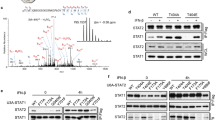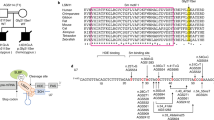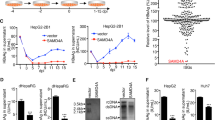Summary
Poor induction of interferon-induced 2′,5′-oligoadenylate synthetase (2-5AS) has been demonstrated in cells persistently infected with mumps virus as compared with uninfected cells. As for the number of interferon (IFN) receptors and the level of IFN regulatory factors (IRF-1 and IRF-2) mRNAs, there was little difference between them. Therefore, it is suggested that the IFN-α signaling system is ineffective in the persistently infected cells. Components of IFN-stimulating gene factor 3α (ISGF-3α), STAT-1α (p91) and STAT-2 (p113), were investigated in human amnion (FL), human nasopharyngeal cancer (KB), human T-lymphoid (HUT 78), and human B-lymphoid (Akata) cells persistently infected with mumps virus. STAT-1α, but not STAT-2, disappeared in these persistently infected cells, and this factor was not restored by treatment of these cells with IFN. However, no difference was observed between the levels of STAT-1α mRNA transcript in persistently infected and uninfected control cells. It is reason- able to infer that the poor induction of 2-5AS activity is due to the decrease of STAT-1α in correlation with the IFN-signal transduction pathway. Furthermore, induction of other IFN-stimulated genes (ds-RNA activated protein kinase, PKR, and MxA protein) was also reduced in the cells persistently infected with mumps virus.
Similar content being viewed by others
Author information
Authors and Affiliations
Additional information
Received March 30, 1998 Accepted June 1, 1998
Rights and permissions
About this article
Cite this article
Yokosawa, N., Kubota, T. & Fujii, N. Poor induction of interferon-induced 2′,5′-oligoadenylate synthetase (2–5 AS) in cells persistently infected with mumps virus is caused by decrease of STAT-1α. Arch. Virol. 143, 1985–1992 (1998). https://doi.org/10.1007/s007050050434
Published:
Issue Date:
DOI: https://doi.org/10.1007/s007050050434




